
I was in western Oklahoma for the Lesser Prairie-Chicken Festival the last weekend in April, and then headed a bit further south to Oklahoma’s Wichita Mountains. That’s long been one of my favorite places on the planet, and it also was a favorite for my dog Photon. She died on April 7, and I decided I’d bring some of her ashes to this lovely place that made her so happy. Photon and I had spent several days camping in the Wichitas in May 2007, during a wonderfully wet year, when the entire area was cloaked in magnificent blossoms. I took my favorite photo of her on a field covered in Mexican Hats.

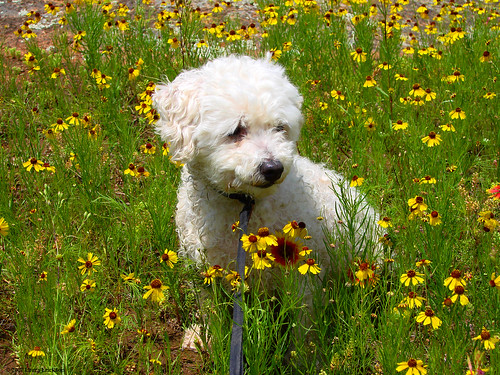
Now much of Oklahoma is in the midst of an extended and long-standing drought, and it was a bit earlier in the season, so flowers were few and far between on April 28. I’d left Woodward, in northwestern Oklahoma, at mid-morning under heavy cloud cover, and arrived in the Wichitas in early afternoon to a gorgeous blue sky dotted with puffy cumulus clouds.

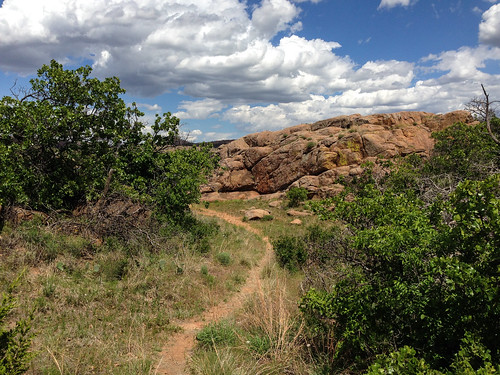
After picking my campsite, I headed to my favorite spot for Black-capped Vireos, where Photon and I had spent a lot of time, in hopes that the first vireo might have arrived. Last spring I was in the Wichitas a couple of days later, and a young male was singing up a storm, establishing his first territory.
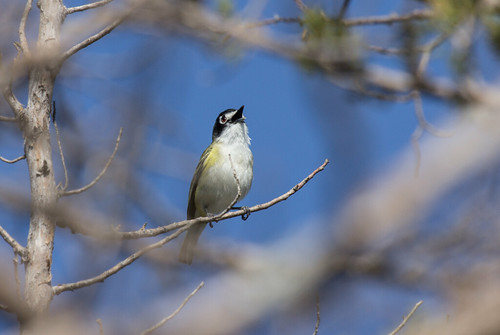
I hoped I’d run into him again. I reached the spot, and found a lovely patch of yellow flowers for Photon’s ashes.

The moment I gently smoothed the ashes on the ground beneath the flowers, a Black-capped Vireo started singing.
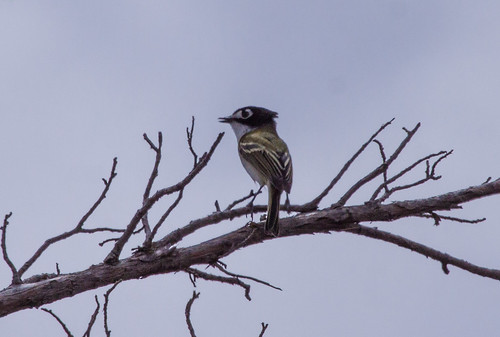
He sang just a few songs, and then ducked into a thicket right near the flowers. Soon I spotted both him and a second vireo—a female. This guy was an unbanded adult—exactly what my male from last year would now be, so although it's impossible to be certain, there’s a better than even chance that this was he. Both he and the female were gathering nesting materials.

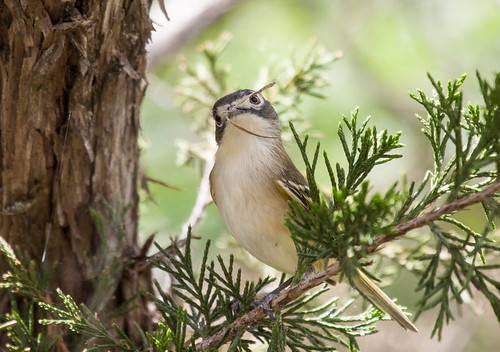
He sang only a few times during the two hours I was there, and seemed to wander farther away from the thicket where the nest had to be than the female did. She tugged at strands of spider silk, and wadded up bunches of it to carry back to the thicket.
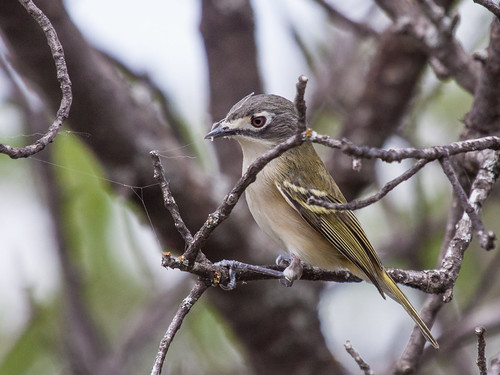
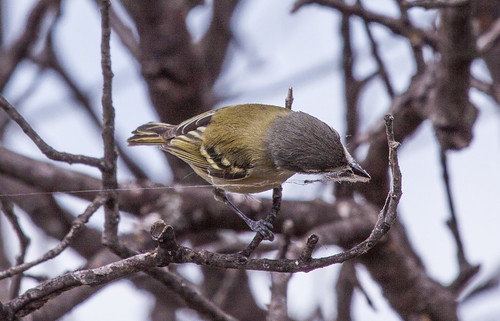
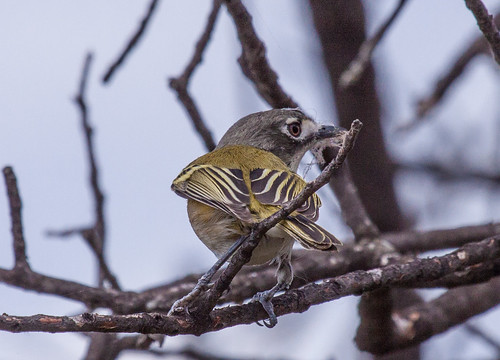
I took lots of photos of her. The male came into view several times, too.
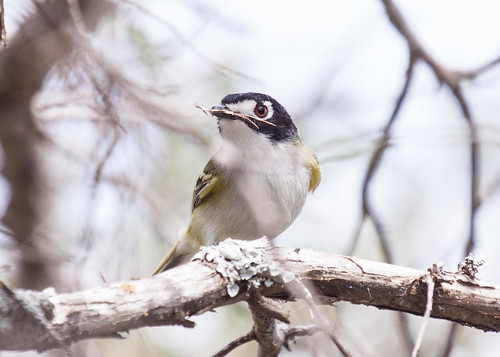
Another male turned up on the territory briefly, long enough that the nesting male sang several songs in a row, but once he seemed sure that the other male had gone, my guy started gathering nest materials again. I’d not had a chance to observe many females before, and it was thrilling to witness this moment in a mated pair’s life cycle, in the process of bringing brand new Black-capped Vireos to the planet. I was in the perfect place at the perfect moment, and could think of Photon without crying for the first time since she died. I spent a couple of hours with the vireos and then went to my campground. I was in the same spot, or close to the same spot, I’d camped with Photon in 2007.
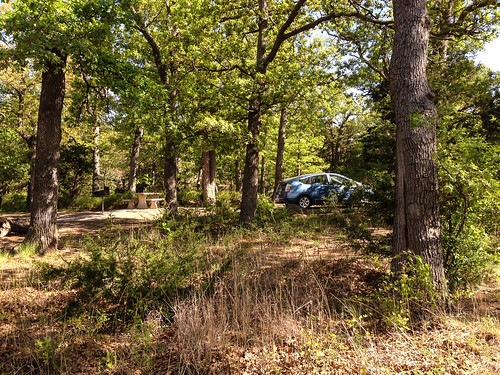
That time it rained almost every evening. This time I fell asleep to Chuck-will’s-widows and nighthawks.
I stopped by the vireo spot again in the morning. This time a photographer was there—a refuge guide had told him it was a good spot for seeing them. He was listening for songs and hadn’t found the birds yet—like most people, he didn’t realize that singing rates ebb and flow at specific points in the nesting cycle. Males sing most before they attract a mate and then again once the nest is built and the female is incubating. I explained this and showed him where to watch without blocking their path to the nest site. Then I left him to enjoy them in the quiet loveliness I’d had the day before. It was time to head home.
